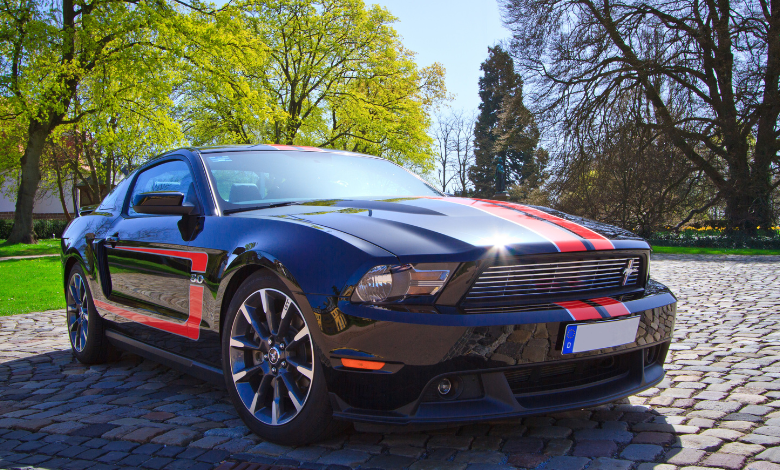Vehicle specs for a 1993 ford ranger 1ftcr10a5pud15252

1993 Ford Ranger Overview
The 1993 Ford Ranger is part of the first generation of compact trucks from Ford, continuing the company’s long-standing reputation for reliable, versatile vehicles. Designed primarily for both personal and light commercial use, the Ranger offered excellent towing capacity, fuel economy, and durability. This article will provide a detailed breakdown of the 1993 Ford Ranger’s specifications, focusing on the VIN (1FTCR10A5PUD15252) and discussing the various features and configurations of this popular truck model.
Vehicle Identification Number (VIN) Breakdown
- 1FTCR10A5PUD15252 is a unique VIN for a specific 1993 Ford Ranger. Here’s a breakdown of its meaning:
- 1: Country of origin – United States.
- F: Manufacturer – Ford.
- T: Vehicle type – Truck.
- C: Line – Ford Ranger.
- R: Series – 2WD, Regular Cab.
- 10: Engine type and displacement – Inline-4, 2.3L.
- A: Restraint system – Manual belts, no airbags.
- 5: Check digit – Validity of the VIN.
- P: Model year – 1993.
- U: Assembly plant – United States.
- D15252: Sequential production number.
This VIN represents a 1993 Ford Ranger, 2WD, Regular Cab with a 2.3L engine, built in the U.S.
Engine and Performance
The 1993 Ford Ranger came with a variety of engine options. The model represented by this VIN (1FTCR10A5PUD15252) is equipped with the 2.3L inline-4 engine.
Engine Specifications:
- Engine Type: Inline-4, SOHC (Single Overhead Cam).
- Displacement: 2.3 liters.
- Bore x Stroke: 3.56 inches x 3.70 inches.
- Compression Ratio: 9.0:1.
- Horsepower: 105 horsepower at 4,000 RPM.
- Torque: 135 lb-ft at 3,200 RPM.
- Fuel System: Electronic Fuel Injection (EFI).
This engine was designed for both efficiency and durability, making it an ideal choice for a compact truck. Its low compression ratio contributed to its fuel efficiency, while its torque was more than sufficient for light-duty hauling and everyday driving.
Transmission Options:
The 1993 Ranger was available with several transmission choices, including both manual and automatic configurations:
- 5-Speed Manual: A standard 5-speed manual transmission was available for drivers seeking more control over their driving experience. The manual was paired with the 2.3L engine for improved fuel economy and driving engagement.
- Automatic Transmission: The optional 4-speed automatic transmission provided a more relaxed driving experience, ideal for city driving and long commutes. It offered smooth shifts, although it did slightly reduce fuel efficiency compared to the manual transmission.
Fuel Economy
The 1993 Ford Ranger, with the 2.3L engine, offered solid fuel economy for its time:
- City: Approximately 18-20 miles per gallon (MPG).
- Highway: Approximately 23-26 MPG.
This fuel efficiency made the Ranger an appealing choice for people looking for an economical compact truck that didn’t compromise on utility.
Suspension and Handling
The Ranger was built with a suspension system designed to offer a smooth ride and reliable handling, even when carrying loads or towing:
- Front Suspension: Independent suspension with coil springs.
- Rear Suspension: Leaf spring with a solid axle.
This setup provided the Ranger with good balance, offering comfort when empty and strength when fully loaded.
Dimensions and Towing Capacity
The 1993 Ranger was a compact truck with dimensions that were ideal for maneuvering through both urban and rural environments. It was also capable of carrying and towing significant loads for its size.
- Overall Length: 174.7 inches.
- Overall Width: 66.2 inches.
- Wheelbase: 106.5 inches.
- Curb Weight: 2,500 – 3,000 pounds, depending on the trim level and configuration.
- Towing Capacity: 3,000 to 4,000 pounds, depending on the engine and axle configuration.
The towing capacity of the 1993 Ford Ranger made it an excellent choice for small trailers, boats, or light construction equipment.
Brakes and Safety
The 1993 Ranger was equipped with hydraulic disc brakes in the front and drum brakes in the rear. The braking system was reliable but basic by today’s standards, with no modern features like anti-lock braking (ABS). However, it provided adequate stopping power for a truck of its size.
- Front Brakes: Disc.
- Rear Brakes: Drum.
- Steering: Power-assisted steering.
Exterior Features
The 1993 Ford Ranger featured a sturdy, practical exterior with classic compact truck design elements.
- Body Style: Regular cab, long bed or short bed configurations.
- Bumper: Standard chrome front and rear bumpers.
- Wheels: 14-inch steel wheels were standard, with optional aluminum wheels on higher trims.
- Lighting: Halogen headlights with conventional sealed-beam bulbs.
- Windows: Manual windows (power windows were available on higher trims).
- Mirrors: Manual side mirrors, with optional power mirrors.
The Ranger’s design focused on utility and ease of use, with a simple, durable exterior that could stand up to tough conditions.
Interior Features
Inside the 1993 Ford Ranger, the focus was on practicality and comfort. The cabin was simple but functional, with ample space for two or three passengers in the Regular Cab configuration.
- Seating: Bench seat in the Regular Cab, with cloth upholstery in most trims. Vinyl upholstery was available on base models.
- Dashboard: Standard dashboard with easy-to-read gauges, including speedometer, tachometer, and fuel gauge.
- Air Conditioning: Optional, available on higher trims.
- Radio: AM/FM radio, with an optional cassette player in select models.
- Storage: Small glove compartment, door pockets, and limited storage space behind the seats.
The interior was designed to offer comfort for everyday driving, with enough features to meet the needs of most owners without unnecessary frills.
Trim Levels and Options
The 1993 Ford Ranger was available in several trim levels and configurations, allowing buyers to choose the truck that best suited their needs:
- Base: The standard model, which included essential features like the 2.3L engine, 5-speed manual transmission, and vinyl upholstery.
- XLT: A more upgraded version, offering features like cloth seats, power windows and locks, and chrome bumpers.
- STX: A sportier trim with upgraded suspension, alloy wheels, and a more aggressive look.
- Splash: A special edition with unique body styling, including special graphics and color options.
Safety and Security
In terms of safety, the 1993 Ford Ranger was equipped with basic features for its time, although it lacked modern amenities like airbags and electronic stability control.
- Airbags: Not available.
- Seatbelts: Manual seatbelts for all passengers.
- Anti-lock Braking System (ABS): Not available.
- Safety Features: Basic crash protection, including a sturdy cab structure designed to protect occupants in case of an accident.
Reliability and Maintenance
The 1993 Ford Ranger was known for its durability and longevity. With proper maintenance, the truck could run for several hundred thousand miles. Regular oil changes, brake checks, and other routine services were essential for keeping the vehicle in good condition.
Conclusion
The 1993 Ford Ranger was a versatile, durable, and economical truck that served the needs of a wide range of drivers. With a solid engine, a good range of features, and a reputation for reliability, it became a favorite among truck enthusiasts and everyday drivers alike. The Ranger’s compact size made it ideal for urban driving, while its towing capacity and payload allowed it to tackle light-duty work with ease. Whether you were using it as a personal vehicle or for commercial purposes, the 1993 Ford Ranger provided an excellent balance of performance, efficiency, and utility.



